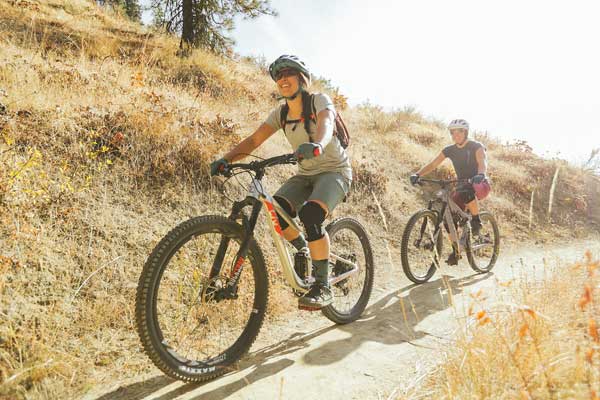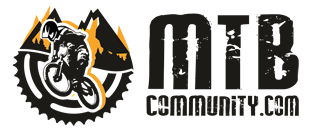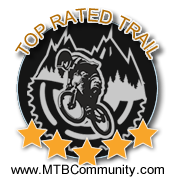5 Beginner Mountain Biking Tips

Mountain biking offers an experience that no other sport can match. From the great workout to the fresh air and adrenaline mountain biking is straight up fun. Getting started can be an intimidating prospect for beginners, however - mountain bikes are pricey and their specs are full of jargon, riding techniques are new, and let's face it - falling hurts. While we can't put training wheels on your mountain bike, we can offer some tips to help flatten out the learning curve and get you out on the trails ready to ride and learn.
1. A Nice Bike Isn't Everything
While a top of the line mountain bike will go a long way to help you get comfortable on the trails and to progress your skills, but when you're first starting out it's more important to just get out there. It's possible to learn basic mountain biking skills on nearly any bike. As you improve, you'll be able to get a feel for what type of mountain bike will work best for you, too. This means when you're ready to upgrade you'll know exactly what you want.
<
2. Stand Up
Standing up and getting your butt out of the seat is one of the biggest adjustments for riders coming from road and urban riding. Yes, pedaling seated is still more efficient on a mountain bike, but standing up on your pedals allows you to use your body's natural suspension, and power up steep climbs or over obstacles. Even with suspension, the best suspension you have is your arms and legs, standing up on the pedals while descending lets you not only be more agile, but also helps you suck up obstacles on the trail. If you stay planted in your seat while going downhill it's much easier for you to be bucked off your bike.
3. Seat Up, Seat Down
In order to stand up while descending and get the most efficiency while climbing uphill, you need to move your seat up and down. This is why nice mountain bikes are fitted with dropper posts, which allow you to change the height of your saddle with a remote mounted on your handlebars. For climbing, or riding uphill, your seat should height should put you in a normal riding position, where your knee is almost fully extended at the bottom of your pedal stroke. When descending, or going downhill, you should drop your seat all the way down, so it's out of your way - you don't need it since you will be standing anyways.

4. Bike Shorts Are Your Best Friend
Sure, you can ride a bike in any clothing, but bike-specific gear will go a long way to keeping you comfortable while riding, which will go a long way to keeping you motivated to learn. Bike shorts with a padded liner or chamois are a godsend, helping to keep your backside happy, even after long days on your bike. Bike shorts are better articulated for pedaling and also are more robust in the event of a fall. Even if you don't want to drop the coin on shorts, chamois or liner shorts are a near must-have
5. Take a Class
One of the awesome parts about mountain biking is the way that you can push yourself as an individual, but sometimes being with a group can be the best thing for you and your riding. Don't overlook a group class. This will not only help you nail basic skills you'll need on the trail, but it will also introduce you to riders of a similar skill level. Learning with a friend is a great way to get better fast.
You can read up on all the tips and tricks in the world, but there is no substitute for time behind the handlebars. So with that in mind, get out there and ride!


